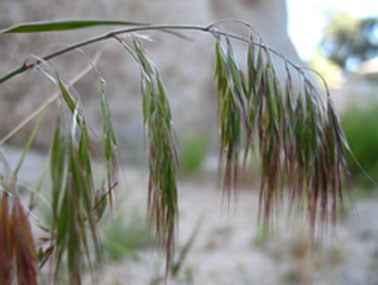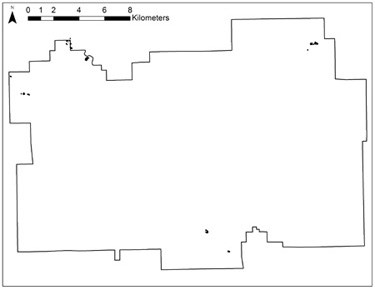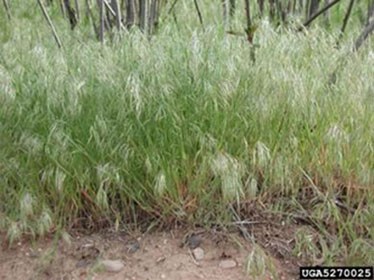
NPS Photo/ Robb Hannawacke Plant Description
Cheatgrass (also known as Downy Brome, Bromus tectorum) is an annual grass 6 to 18 in tall. The leaves and lower stems are covered in short, soft hairs. The flowers occur as drooping, open clusters that change color as they mature from green to reddish to tan. Germination takes place in fall or spring, flowering occurs in late May through mid-June, and plants are dead by mid-summer. Cheatgrass colonizes any open, dry habitat and has the potential to completely alter the ecosystems it occupies by completely replacing native vegetation and changing fire frequency and intensity. Cheatgrass is native to Eurasia and the Mediterranean. It was accidentally introduced into the United States in the mid 1800s.

Habitat and Park Distribution Cheatgrass is primarily found in six areas of Lassen Volcanic NP: Manzanita Lake, Lost Creek, Butte Lake, Headquarters, Boiling Springs Lake, and Terminal Geyser. Each area supports several distinct populations of cheatgrass. Cheatgrass prefers dry, well-drained soils ranging from loose volcanic cinder at Butte Lake to hydrothermally altered clays at Boiling Springs Lake and Terminal Geyser. All known cheatgrass populations are in sites that have experienced some degree of disturbance such as fire, trampling, or geothermal development.

University of Connecticut/ Leslie J. Mehrhoff Ecology and Reasons for Concern
Cheatgrass is a highly invasive species. It greens up and sets seed earlier than most native species, giving it an advantage over slower-growing native species. By using up soil moisture in the spring, it can prevent the germination of native plants. It has the potential to invade disturbed and undisturbed ecosystems alike, as long as there is exposed soil and sunlight. Each year, cheatgrass generates large amounts of fine-textured fuel and enormous amounts of seed. Cheatgrass tendn to burn more frequently than most native plants and also re-sprouts more quickly after fire. After a number of fire cycles cheatgrass dominates the ecosystem. The main concern at Lassen is that cheatgrass will spread throughout the park from its current restricted areas. The seeds have small barbs that enable them to attach readily to fur, socks, and bootlaces. Under normal conditions, seeds can survive up to three years in the soil. We may not know that the cheatgrass has spread until a fire or other disturbance exposes the seed and enables them to germinate.
|
Last updated: February 28, 2015
